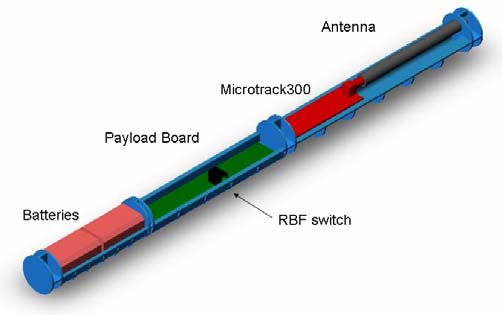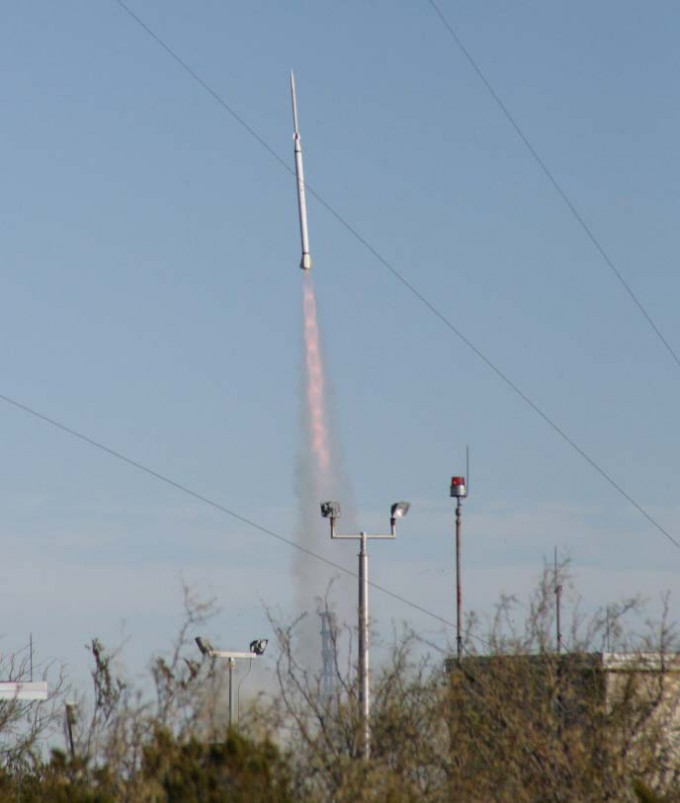
Space Express was a suborbital mission that launched out of White Sands Missile Range, New Mexico. This non-recoverable payload was aboard a Shadow 1 DART Sounding Rocket and had an estimated flight time of four minutes. The goal of this rapid turn around mission was to perform a suborbital test of the design, development and process that would later be used in orbital missions. From initial design to final design and launch, this mission was put together in less than six months, a typical time period for suborbital missions.
Mission Overview:
The Shadow 1B/D Sounding Rocket was used as this mission’s launch vehicle because, as required, the payload was small and academically geared. This particular launch vehicle was powered by a Super Loki Sounding Rocket, which is generally used to obtain high altitude measurements, such as temperature, density, and wind speed. Along with size limitations, Space Express had certain mechanical criterium that needed to be met. These requirements included: the payload and components needed to withstand a max of 150g acceleration at liftoff and a temperature of 100oC, it was necessary that the center of gravity be toward the nose cone, and the total weight of the dart rocket and payload needed to be greater than 6.1kg. These were just a few of the design parameters the team needed to consider for this particular mission.
The payload for Space Express contained a telemetry package that was intended to gather temperature, pressure, acceleration experienced during the launch, and mission time. The image below shows the mechanical support structure along with the placement of the batteries, payload board, and antenna within the rocket.

Post Flight:
Space Express was not able to reach the intended goal of space due to a launch system failure during the boost phase. However, the sensors located on the payload board were able to detect ignition of the booster, the mission timer was started, and one data packet was received and decoded at a ground station around 7.5 seconds after launch. The nose of the rocket experienced an estimated temperature of 1000oF during failure, an acceleration over 100Gs, and the rocket exhibited a corkscrew exhaust away from the expected, stable flight pattern. Although the mission wasn’t a complete success, it provided the team with valuable experience for future missions.


